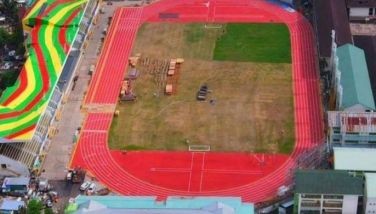Solutions to traffic gridlock

The issues regarding the daytime truck ban to solve the traffic gridlock in Manila may be off the headlines temporarily, but these have to be addressed again after the eight-month reprieve by the city government. Ever since I wrote a column supporting the daytime truck ban, I have received several proposals that merit serious consideration.
The most logical and meritorious was sent by Presidential Communications Secretary Sonny Coloma. Here is his proposal:
“Elfren, thanks for sharing your thoughts on the truck ban. When I was Department of Transportation and Communications (DOTC) Undersecretary in 1990, Secretary Oscar Orbos initiated a ‘night delivery’ program participated in voluntarily by the Port Area truckers. In effect, this was also a daytime truck ban, except it wasn’t called such. For a two-week period, Metro Manila streets were clear of big trucks. The truckers said they fared better because during the day they could hardly manage two round trips.
Our limited resource is road space. Our underutilized resource is time (night hours). If we can make the Customs and Port Authority operate a night shift, and if big establishments — supermarkets, groceries – will accept night deliveries, even if they incur additional costs on overtime and night differential, then this can be a viable concept. Sonnyâ€
I asked Secretary Coloma if I could quote his message because I really thought it provided some sense in a seemingly heated and emotionally-laden debate. Here was his answer:
“Yes, you may, if only to provide some sort of perspective to today’s heated debate. The thrust of our messaging today is that we must seek win-win solutions that build upon common ground. That was what Secretary Orbos invoked more than 20 years ago.
Another interesting factoid: a key person in bringing this about in 1990 was Juan Sta. Ana, then Port of Manila manager of the Philippine Ports Authority. He was key in arranging an agreement among truckers to work with the port authorities. Today, Sta. Ana is the general manager of the Philippine Port Authority.â€
In a recent interview, DOTC Secretary Jun Abaya said the solution to the issue of traffic decongestion in Metro Manila is to divert shipping and delivery operations to the ports of Subic and Batangas. According to him, this solution requires mutual agreement among shipping companies, exporters, importers, and trucking companies.
My personal impression is that Abaya wants to decongest Manila but seems reluctant to actively intervene in any way. Instead he is relying on the shippers and truckers to place national interest ahead of their personal interest and start moving out voluntarily.
Shifting to Batangas or Subic will require additional investments by the shippers and trucking companies. Abaya must find some other means of motivating these firms to transfer operations. I seriously doubt whether appealing to their sense of patriotism or national interest will work.
But based on the responses of these officials and the general public, my impression is that there is general agreement that the streets of Metro Manila must be decongested and one of the short term solutions is to impose a daytime truck ban. The question is how to address the problem of companies receiving the goods necessary to continue operating.
Again, it seems that there are many who have concrete proposals. For example, I received the following message from one of my former MBA students in De La Salle University, Gerard Boz C. Tungol, who is now a manager in the Development Bank of the Philippines. He wrote:
“I agree sir [with the daytime trucking ban]. Some of the solutions to the problems facing companies relying on these delivery trucks are as follows:
The utilization of ports in Batangas and Olongapo will also result in decongestion as more workers will transfer and stay in these areas as employment opportunities will be presented. Hiring more trucks during the times that trucks are not banned will also provide opportunities for the expansion of trucking companies. Adjusting lead times for ordering is another solution.â€
Manila can experience an economic renaissance by being a premiere destination in Asia. As I have mentioned before, the potential tourism magnets are present within this one city. Aside from the places I have mentioned like Intramuros, Fort Santiago and Binondo, I should add the Ermita-Malate and Paco Park areas. In Bangkok, there is a tour of temples. Manila can offer a tour of cathedrals and churches — Manila Cathedral, San Augustin, Malate, Ermita, Paco, Sta. Cruz, Binondo and Quiapo — if this could be packaged into a one-day tour which requires abolishing the traffic gridlock.
Tourism is the best generator of jobs in the short term. Think of a million tourists spending $1 billion in the city of Manila. This is equivalent to P45 billion. But tourist spending will have a multiplier effect. The tour operators, guides, restaurant employees and shop owners will spend what they have earned and purchase goods and services from other businesses, and so on and so forth.
A $1 billion injection into the economy can, with a multiplier of 10, result in actual economic boost equivalent to P450 billion. But even half of that would mean jobs and decent lives for so many families.
A daytime trucking ban leading to traffic decongestion will not be the only requirement to convert Manila into a commercial and tourism center. But it is an essential first step.
This whole issue concerning the truck ban should not just be seen as a traffic issue. This is an economic solution to the need for more jobs. This is a necessity for the renaissance of Manila to once again be the Pearl of the Orient.
* * *
Email: [email protected]
- Latest
- Trending



























